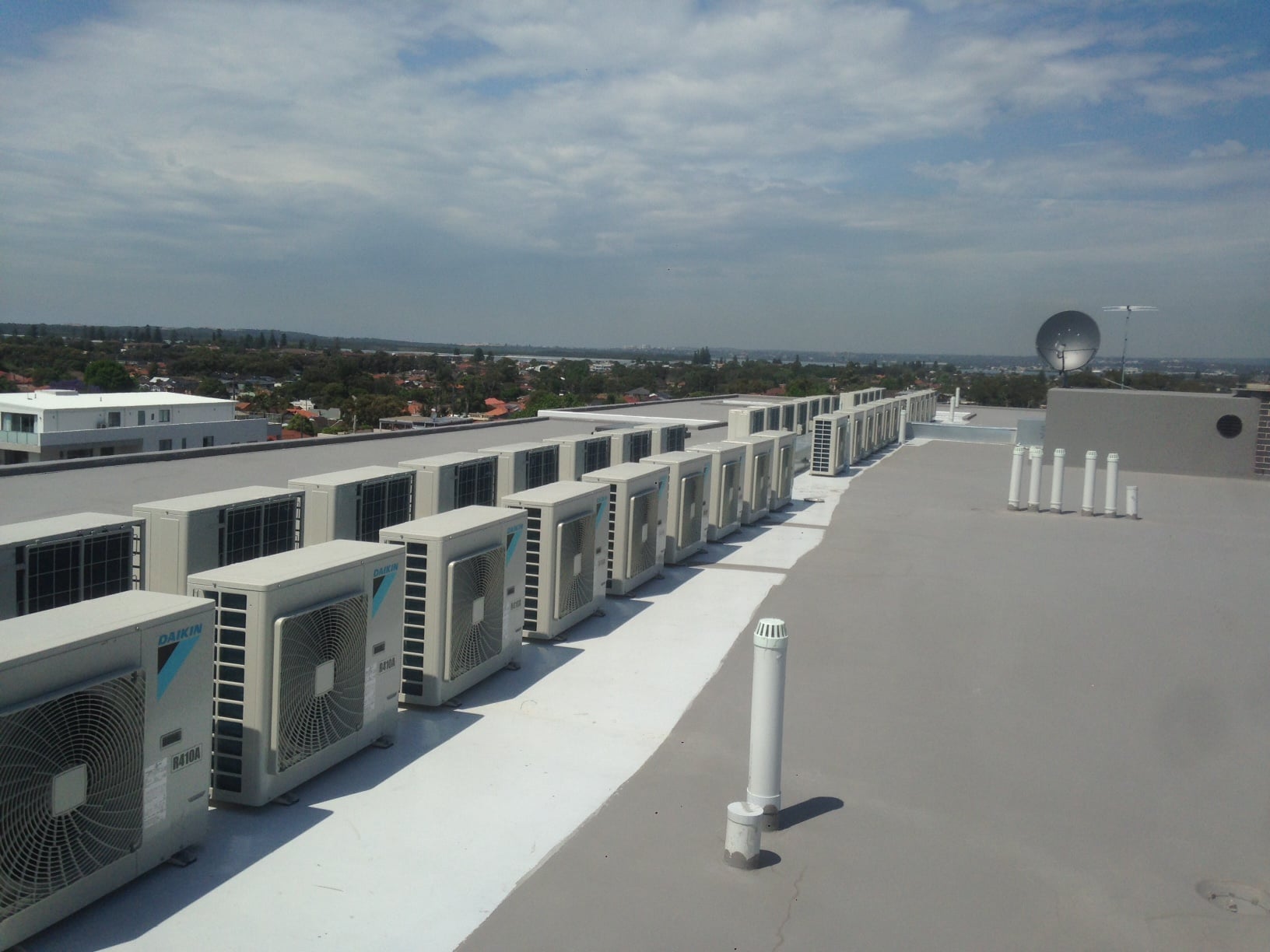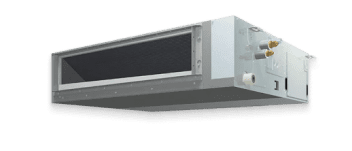
We live in such modern times that we fail to realize how life had been uncomfortable before. With cooling systems all around, have you ever thought how it would be without airconditioners?
Close your eyes and try to think of the hottest day you can remember. If that’s a bit too hard, just think of the last reallyhot day you experienced.
Got it? Now think of a summer period where most days were nearly that hot; even if most days were 5 to 10 degrees cooler, it’d be quite the scorcher, right?
Okay — now imagine going through that entire summer somewhere with no cooling anywhere. No fans, and certainly no air conditioning. Almost unthinkable, isn’t it?
Well, consider this — in 200,000 years of human existence, only the last hundred have had electrical fans, and even less than that readily available air conditioning.
So I think we can confidently start this off by agreeing that air conditioning has most definitely changed the world. We can also agree, then, that the history of air conditioning is a more than worthy topic!
For such a revolutionary invention, air conditioning’s history is pretty widely ignored. Whereas other revolutionary ideas like the light bulb or the telephone have their origin stories told and retold like a Marvel superhero (and their inventors’ names are seared into our minds), few of us know the facts about the invention of one of the most loved creature comforts in a climate like ours.
Well, we’ve dug them up for you — but first, we’re going to go a bit further back. Because way before electricity, human ingenuity resulted in some fascinating ways to try to ‘beat the heat’.
How Air Conditioning All Started
Unsurprisingly, historians have found that for as far back as they can gather, people in hot climates have been saying “that’s enough of that now, let’s cool down.” Naturally, bodies of water were safe havens — if zebras could figure it out, certainly could we!
The challenge was how to stay cool when in a dwelling or no swimming holes were around. Well, with the weather extremes of prehistoric times, gathering snow and ice in the winter for use in the summer was an early attempt.
Obviously, this was absolutely inefficient and unsustainable. Later techniques were developed through the realisation that adding cold water to a semi-permeable or other non-solid material would cool the air blowing through it. In ancient Egypt, reeds were often used, while others would use sheets and the like.
Of course, when ice water was brought into the mix, the result was divine. The Romans, ever the innovators, developed an incredibly forward-thinking technique of running cold water through the walls of houses. (Naturally, the commoners would not be privy to such luxury.)
Other innovators with technology one could scarcely believe for the time were the Chinese, who developed massive rotary fans — first powered by prisoners, then centuries later by running water. Of course, generally accepted as the inventors of the hand fan, it should be no surprise that they were ahead of the game!
The Beginnings of True Airconditioning
The beginning of the story about true air conditioning, however, begins centuries later. Following the discovery in the 18th century that evaporating volatile liquids could cause the temperature of objects to rapidly drop, the 19th century saw an important step — namely the use of compression to chill larger volumes of air.
Understandably, the focus of this technology began to gravitate towards the invention of a most practical device — an ice machine. And though arguably the main innovator of this technology, John Gorrie, envisioned it eventually being used to cool not just homes but whole cities, it would take half a century for the concept of air conditioning to take flight.
In the history of air conditioning, the equivalent of Superman landing in Smallville took place in 1902. In a tale all too familiar among the greatest of inventions, the first true electrical air conditioner was not at all designed for the purpose that it provides today.
Engr Willis Carrier
No, the first air conditioner was designed to improve… the quality of a printing company’s product! Due to the heat and fluctuating humidity in the printing plant, keeping paper dimensions and print alignment consistent was proving impossible.
One brilliant engineer figured out that his process of sending steam through coils for heating purposes could be reversed — by using cold water instead, he both cooled the plant and was able to control the humidity, resulting in a perfect print every time.
That engineer’s name? Willis Carrier. (Yes, that’s why the Carrier air conditioning company puts on such airs.) Just four years later, a textile mill owner used a similar technique to improve the production of his product, and deemed it ‘air conditioning.’
Clearly, a man that recognised a good turn of phrase, Carrier used the term in naming his company, which would soon start offering systems to workplaces in order to increase productivity.
And thus begins the arc of the story where air conditioning began to change life as we know it. Expensive and rare, air conditioning was considered practical by the owners of sweltering factories and other workplaces.
Air Conditioning in the 20th Century
Not much work was getting done with half of their employees fainting dead away and suffering regular heat stroke — it was purely a financial decision that keeping their employees able to work would equal more income.
In the 1930s, movie theatres used similar logic to great effect — streams of movie-goers would pile in during the summer to escape the heat for a magical hour or two.
Eventually, air-conditioned automobiles and homes began to crop up, and by the 1950s it was no longer only the wealthiest of the wealthy with some manner of a domestic air conditioner. In the developed world, air conditioning is now a staple.
So what has changed? In short, many lengths we previously went to in order to beat the heat have disappeared or become far less common.
Firstly, air conditioning completely changed how houses could be built. In warmer climates, high ceilings, deep eaves and other features were not just there for aesthetics — they trapped cool air and allowed hot air to rise and escape.
Large, finished basements and split-level homes were also far more popular, as subterranean spaces were considerably cooler.
Ceiling fans are a feature we are all familiar with as being a staple in much older homes, but rare as much more than aesthetic touches in new builds.
Window placement could not simply be chosen for looks — they were almost always placed across from each other to encourage airflow on those hot, stuffy days.
Outside, meanwhile, the planting of large trees was equally strategic. By planting trees on the east and west sides of homes, the unwanted summer warmth could be partially blocked.
How people used their houses has also changed.
Before air conditioning, the idea of sitting around, much less entertaining, upstairs in a two-storey home was absolutely unheard of if you lived somewhere that experienced particularly warm periods.
This is due to a phenomenon known as the ‘stack effect’. Since hot air rises, it will happily dash through any spaces that allow it to do so.
Stairwells, vents, even cracks in the wall or ceiling. As a result, the upstairs of a two storey home would be many degrees hotter than downstairs.
Families would literally not see the upstairs of their homes until it was time to sleep — by which time the bedrooms had (hopefully) cooled somewhat.
Speaking of sleep, it was absolutely common for entire neighbourhoods to pull their mattresses outdoors and sleep in their grundies.
If you lived in the crushing heat of city government apartments, that meant the fire escape; for those with larger spreads, the front porch was a surrogate bedroom.
As for the porch, this is a change air conditioning has brought about that older folk can’t help but lament. If you owned a full home, you had a porch — it was that simple.
Well decorated and often featuring a full set of furniture, the family would congregate – and as neighbours and friends strolled by, they would also join in.
The porch was literally a social gathering place, instrumental in the closeness of communities. While that does sound lovely, and it is quite a tragedy that this practice is no longer as wide spread — we can’t honestlysay we’d trade it for our central air . Especially if you asked us on a 45-degree day.
Air conditioning did not just change how individual houses were built and used, though. The invention has changed how entire neighbourhoods and cities can be built.
Suburban tract housing — or ‘cookie cutter’ neighbourhoods — became common because the concern of that many houses so close together causing unbearable heat was no longer a factor.
The tallest of skyscrapers, built of metal and glass, would be dangerously hot without an efficient cooling method.
And entire areas that were considered practically uninhabitable due to their extreme heat experienced housing booms once all that space could be put to use with shiny new air-conditioned homes.
Having to deal with the heat sans air conditioner even meant there was a difference in people’s behaviour.
Most of us are familiar with the concept of ‘siestas’ in locales like Spain — where, in the middle of the day, people will stop work, take a nap, and then work ’till a later hour.
After the sun has gone down, they happily leave work and socialise in the cool evening. Believe it or not, this was not uncommon in many places around the world when working in the midday heat was simply impossible.
Pictures exist of field workers right here in Australia napping en masse under the largest trees they could find to beat the midday heat!
As the mercury shoots up on the thermostat (look it up, kids — it’s how we knew how hot it was outside before weather apps), we can now thoughtlessly flip on the air conditioner and continue lounging in comfort. Now that we know it’s a fascinating story, though, hopefully, we’ll say a quick ‘thank you’ every time it switches on!
Climacool Can Help
Looking for the newest advances in air conditioning? Climacool Air Conditioning offers the most efficient and features-laden systems available today.Contact us now to see how one of engineering’s greatest feats can make your life more comfortable!






_001.png)


.png)
